But I’d be remiss not to mention those series that have already been cited in these pages for their sterling work this year, not least Criminal (Image) by Ed Brubaker and Sean Phillips which continues to be the best recruiting tool for heist crews and stick-up men in comics.
Meanwhile, Immortal Hulk (Marvel) by Al Ewing and Joe Bennett ascended from its 2018 pomp to become an even weirder, and stronger dose of unmissable fabulist horror in 2019. Si Spurrier, nigh-on unmissable since 2015’s The Spire, has helmed one of the best ongoing fantasy series in the genre-bending glory of Coda (with art by Matías Bergara, BOOM! Studios) while also doing astonishing work in grabbing the baton from Neil Gaiman in The Dreaming (art by Bilquis Evely, DC Vertigo), one of the best expansions upon the Sandman universe yet conceived.
2019 also saw the conclusion of two of the strongest recurring delights within the medium; Brian K Vaughan and Cliff Chiang’s Paper Girls (Image) the finest sci-fi teen caper this side of a Spielbergian suburb, and the magic, majestic, magisterial Unbeatable Squirrel Girl (Marvel) by Ryan North and Erica Henderson - surely this generation’s high watermark for honest-to-goodness belly laughs and plain, old-fashioned heart.
None of that gonzo spirit has been lost in Fraction and Lieber's jaunty, knowing and hilarious reboot
But 2019 also saw a greedy portion of stunning debuts, especially from unexpected quarters. One of the great delights of comics is when less illustrious characters from the canon are given new life. Perhaps no character was a less likely candidate for this treatment than Superman’s Pal Jimmy Olsen (DC), whose Silver Age heyday was a byword for goofy plots, preposterously misleading covers and maddeningly prolix title text.
Time travel, space vampires, appearances from Satan himself – anything and everything could happen in the 60s-era Olsen comics, and none of that gonzo spirit has been lost in Matt Fraction and Steve Lieber’s jaunty, knowing and hilarious reboot. Within its first five issues, our hero is transformed into a turtle, blasted from low earth orbit, and relocated to Gotham as a professional YouTube prankster.
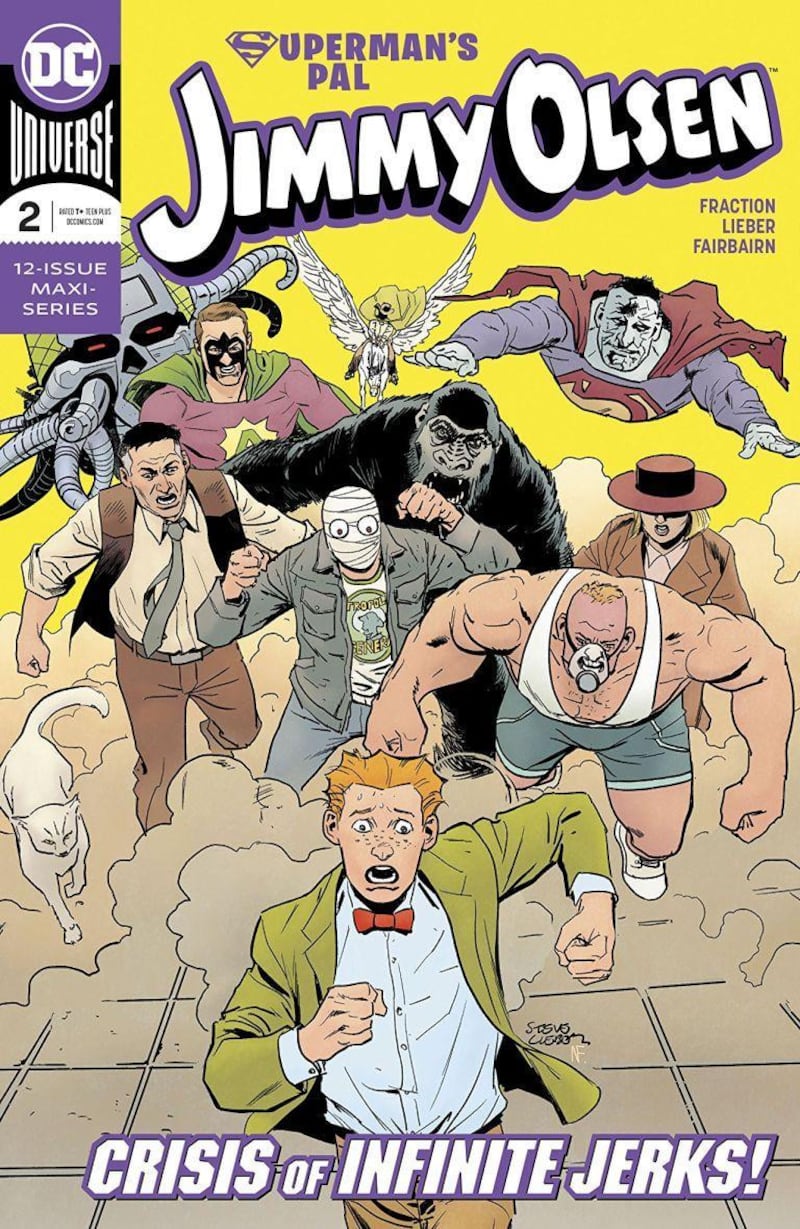
In a medium that too often mines comedy by snidely mocking its characters, Fraction and Lieber generate laughs without losing any affection for the campy roots of the character. The fun they have with Jimmy and the entire DC roster isn’t drawn from sneering at the stupidity of the past, but in embracing the silliness of Jimmy Olsen, which is to say, the silliness of comics more generally. In a world of dour, grim-dark reboots, this manic and madcap Jimmy Olsen deserved to be your pal and mine.
Few stories packed so much into five issues as Ram V and Sumit Kumar’s These Savage Shores (Vault). Set around the heyday of the East India Company’s eastern expansion, it begins with an aristocratic vampire banished from London to Calicut (now the south Indian city of Kozhikode, Kerala) before quickly dovetailing into a melange of Indian mythology, European colonial history and the beastly folk tales of both continents.
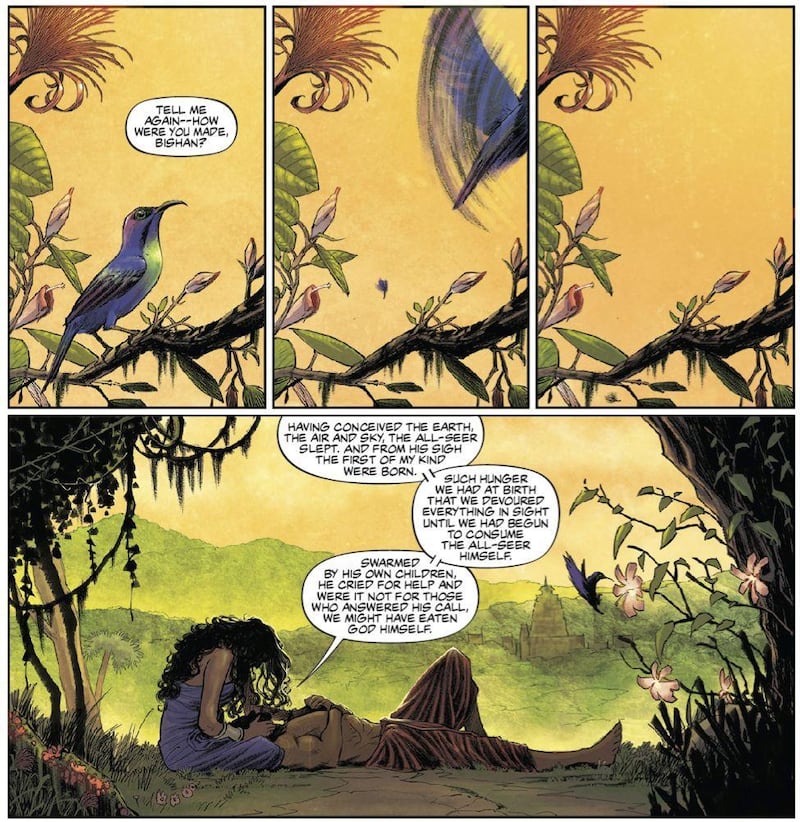
Kumar’s art is stunning, and the writing is just as ornate, and not merely in the literal sense of Aditya Bidikar’s gorgeously versatile lettering. Ram V astutely channels the chipped-marble tones of 18th Century Brits, as well as the local Indian regents and power-brokers vying for influence amid a trail of otherworldly horrors. These Savage Shores is a striking, original tale of men, myths and monsters, be they of the supernatural sort or not.
It's best descrbed as a majestically unhinged acid trip through 20th century British music
“Art for art’s sake; hits for f**k’s sake” goes the old pop music adage, and this sentiment, in all its nihilistic cynicism, could be a decent epigram for John Riordan and Dan Cox’s ebullient and irrepressible Hitsville UK (Crowdfunded). Nominally a satire set in and around a fictional UK record label, it’s best descrbed as a majestically unhinged acid trip through 20th century British music, with a cartoonish roster of characters that fall somewhere between Ray Lowry’s pop-punk splatter illustrations, George Dunning and Klaus Voorman’s Beatles artwork and Terry Gilliam at his most radically unhinged.
There is a plot underneath all this, and a thousand endlessly memorable lyric combos from made-up acts like Aryan 51 (Kraftwerk meets Nazi metal), The CNR (feminist magick power punk) and Gwillum (sodden, fungal folk). But it might be best to let the entire glorious phantasmagoria unload on you like the torrent of raw imagination that it is.
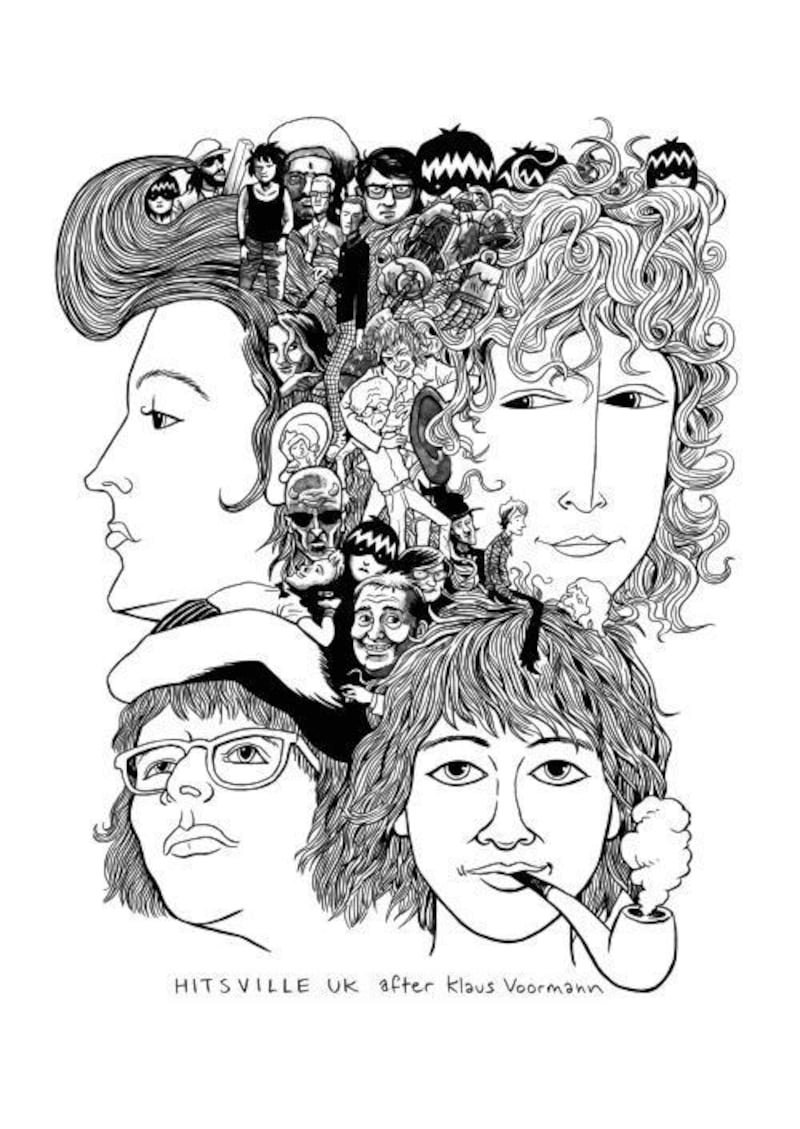
It’s a poor trick of the critic to lapse into calling a work of art indescribable, or so entirely its own thing that comparisons are meaningless, but what else are you left with when confronted by a gripping, sensual fantasy centred around a cat woman being hunted through a shapeshifting vampire’s labyrinthine castle? It’s no hyperbole to say Emily Carroll’s When I Arrived At The Castle (Koyama Press) is simply unlike anything else you will read this year.
Drawn solely in black, white and deepest, dankest red, Castle is dipped in the old magic of fables and the contradictory, shifting logic of dreams. It’s a horror tale, a gothic fantasy, and a quasi-erotic pseudo love story, all wrapped up in one uncannily compelling package, underpinned by some of the most poetic and beguiling scripts in living memory. Seek no further details of its plot before reading; when you arrive at the castle, do so unprepared.
Young hearts run free, but sometimes they run away entirely. Such is the dilemma for heroine Freddy in Mariko Tamaki and Rosemary Valero - O’Connell’s impossibly charming high school rom-com Laura Dean Keeps Breaking Up With Me (First Second). Our heroine Freddy is repeatedly ditched by her cooler-than-thou girlfriend – the titular Laura Dean – and has to pick her way through the consequences with all the angst of a classic lovesick loner.
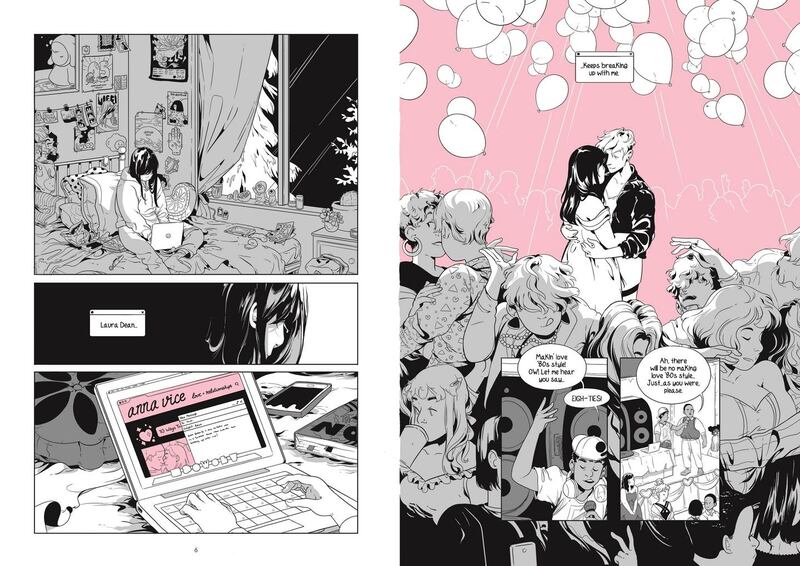
Valero - O’Connell’s flawless, bubblegum-hued visuals – all whites and pinks – combine with Tamaki’s perfectly captured teen speech bring the world of adolescent heartbreak to chest-pumping life. This is a book to fall in love with, and hope against hope it doesn’t end up leaving you for a cooler reader in the end.
A road trip shared by two near-strangers, the exorcism of past traumas, and an ambulatory, road-bending, magical cat. It’s getting harder to mine new superlatives for the delicacy and craft of Tillie Walden’s storytelling, especially since Are You Listening (First Second) comes just a year after her similarly weighty and breath-taking book, On A Sunbeam, and boasts a lot of the same trademarks; knotty, naturalistic dialogue, emotional depth, and worlds which are beautifully drawn in every sense of the term. In a dedication at the end, Walden emphasises how hard it is to “make long books in short times”, and we should be immensely grateful, not to mention astonished, that she’s done so again.
The Hard Tomorrow is an exquisitely drawn meditation on love, childbearing, and Facebook police states
Like Walden, Eleanor Davis writes and draws so beautifully it’s hard to know which to praise first. Having wowed with last year’s surreal, hilarious and gorgeous Why Art? she returns with an altogether more down-to-earth story in The Hard Tomorrow (Drawn & Quarterly). Set in a near-future so close to our own you can practically taste it, The Hard Tomorrow centres on Hannah, a care nurse trying to conceive a child with her stoner boyfriend Johnny, in between time spent attending meetings for a protest group whose cause is illuminated, with brilliant subtlety, over the course of the book’s narrative.
The Hard Tomorrow is an exquisitely drawn meditation on love, childbearing, and Facebook police states. Mostly, it’s about finding hope in an increasingly hopeless world, whether through political resistance, moments of kindness, or creating a new life or two to place within it. You will remember its last four splash pages for a long time to come.
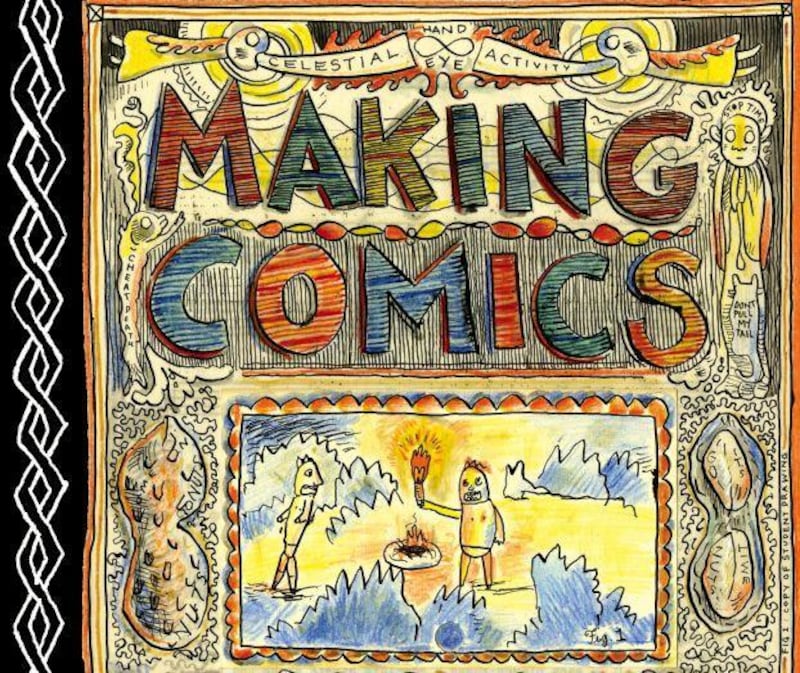
“A drawing may come from you, but it exists apart from you in both matter and meaning to others”. This koan from Lynda Barry’s Making Comics (Drawn & Quarterly) is one of hundreds I could have chosen to illustrate the searingly simple profundity that litter its 200 stunning pages.
Easily one of the most handsome objects on this year’s list, Making Comics is a guidebook for creativity that’s styled as a working notebook; thin-leaf pages lined within the bindings of a school journal instantly recognisable from your childhood. What lies inside is just as remarkable, however; a collection of stories, commands, exercises and inducements to create, that transcend being a mere textbook and become something more inspiring, and quietly revelatory.
Barry is an accomplished cartoonist and storyteller, whose mostly biographical works like One! Hundred! Demons! and What It Is are required reading for anyone wishing to explore the boundaries of humanistic storytelling, but as with her last educational tome, Syllabus, she continues to be one of the mediums finest teachers and champions.
Making Comics is a perfect jumping off point for someone who wants to explore their artistic side, or someone who’s simply never thought to. Making Comics isn’t merely a prospectus on how to encourage your inner artist, it’s a manifesto for using comics to become a better person, and an atlas for a more kind and creative world.

















